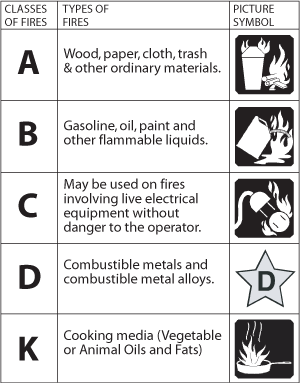What are the different types of fire protection systems? What is fire fighting system and its importance? The sprinklers immediately go off letting out water that potentially gets rid of the fire danger.

In these types of sprinklers, pressurized nitrogen is filled in the pipes and not water. Wet pipe systems are the most commonly installed type of fire protection setup, being both cost-effective and low maintenance. These systems are constantly filled with water, allowing for immediate response in case of fire detection. Deluge systems operate on triggers, like pre-action systems. Firefighting requires skills in fire suppression, rescue, and hazardous materials mitigation.
Firefighters must also have, or be able to acquire, knowledge of department organizations, operations, and procedures, and the district or city street system they will have to negotiate in order to perform their duties. WATER SPRAY AND SPRINKLERS. FIRE FIGHTING SYSTEMS a large store of water in tanks, either underground or on top of the building, called fire storage tanks. Passive fire protection arrangements , such as structural fire protection , as well as fire detection systems, are outside the scope of this document.
Fire-fighting systems of offshore facilities and installations are also outside the scope of this document. It is important that occupants are familiar with which extinguisher type to use on which fire. This fire sprinkler system is cost efficient and low maintenance. These types of fire sprinkler systems also need a smoke or heat detector like the pre-action system. A deluge system has open nozzles that can be used when a hazard is present.
Depending on the system type, the pipes can be filled with water, pressurized air , or nitrogen gas. Wet-Pipe Fire Sprinkler System Type. This is the most commonly used indoor sprinkler system. It’s also very simple to maintain and reliable.
With this type of system, the water is stored under pressure directly in the pipes. In a wet pipe fire sprinkler , the water is stored directly in the pipes and released by heat activated sprinkler heads. Types of fire hazard protected by water spray systems, components of these fire fighting systems are discussed in this post along with limitations of such systems.
On chemical tankers, that have foam as fixed fire fighting system for cargo fires, alcohol resistant foam is a must. This is because these ships carry alcohols (like Methanol, ethanol) as cargo. Since our founding in we’ve provided outstanding fire protection systems that are custom-designe expertly installe and well-maintained. Foam Fire Suppression Systems. Our highly skilled and well-trained staff have decades of combined experience in designing, installing, and testing fire-protection systems.
Minsun Infraa Prrojects Pvt Ltd. Fire hydrant system which is the basic from all the fire fighting solutions. Fire Hydrant system is designed to suppress the fire of huge proportions in all classes of fires. Additional Building Fire Detection Systems. Other accessories are available for the design of a modern building.
These may include: Gas Detection Systems: sense the presence of harmful gases within any given area. The system can activate the alarm system to indicate a particular gas level has been reached and evacuation is necessary. This type of sprinkler contains pipes that are filled. Dry Pipe Fire Sprinkler Systems.
In locations that experience cold climates,. There are other fire protection systems that. Horizontal Split Cases are the fire pumps you will see most often.
Although it needs a water source that is not part of the system itself, it is still easy to work with. Alert systems can also close fire doors, recall elevators, and interface and monitor the installed suppression systems, such as sprinklers. Code calls for it,” Harrington notes.
The fire main is a system consisting of sea inlet(s), suction piping, fire pumps and a distributed piping system supplying fire hydrants, hoses and nozzles located throughout the vessel. Its purpose is to provide a readily available source of water to any point throughout the vessel which can be used to combat a fire and is considered the.
No comments:
Post a Comment
Note: only a member of this blog may post a comment.